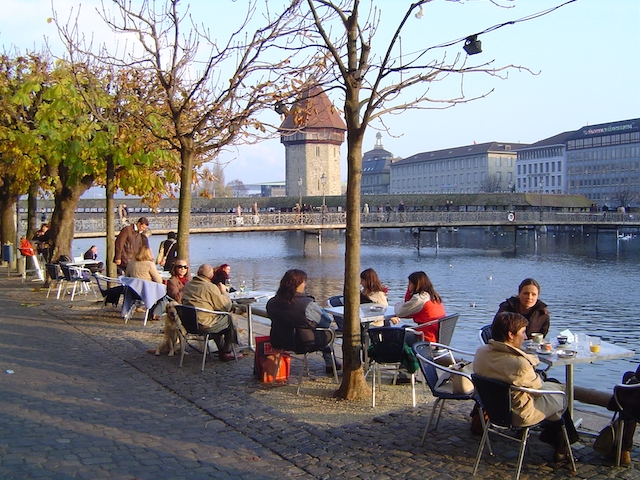Dal Is A Staple Dish In South Asian Cuisine
Dal is a dish that holds a special place in South Asian cuisine. It is enjoyed across India, Pakistan, Bangladesh, and other neighboring countries. Dal is made from various types of lentils, peas, or beans. These legumes are cooked into a flavorful stew and served with rice or bread. Over time, dal has become a staple in everyday meals, offering both comfort and nourishment.
The varieties of dal
Dal comes in many varieties, each offering a unique taste and texture. Common types include masoor dal (red lentils), toor dal, moong dal, and chana dal. The preparation method may vary depending on the type of lentil used. Each variety brings a different flavor profile, texture, and nutritional benefit, making dal a versatile and adaptable dish.
The nutritional benefits of dal
Dal is an excellent source of plant-based protein, making it a popular choice among vegetarians and vegans. It is rich in essential nutrients like fiber, iron, and folate. Lentils used in dal are low in fat and contain complex carbohydrates, which provide lasting energy. Dal’s high fiber content supports digestion, while its iron helps prevent anemia. Additionally, dal is known for its ability to regulate blood sugar levels due to its low glycemic index.
How to prepare dal
Preparing dal is relatively simple. The lentils are washed thoroughly to remove any impurities. They are then cooked with water until soft and tender. The next step is to prepare the tempering, which involves frying spices like cumin, mustard seeds, garlic, ginger, and curry leaves in hot oil. The tempering is then poured over the cooked dal, enhancing its flavor. Some recipes also include tomatoes, onions, and turmeric to add richness to the dish.
Cooking method
Boiling the lentils is the crucial step in making dal. The lentils are usually cooked in a pressure cooker, which speeds up the process. Once the lentils are cooked, they are mashed or left whole depending on the desired consistency. The next step is tempering, where spices are fried in hot oil to release their essential oils and aroma. This flavorful mixture is added to the cooked dal to create a rich, aromatic dish.
Dal’s role in traditional meals
Dal is often served as a central component of traditional South Asian meals. It is commonly paired with rice, flatbreads like roti or naan, and vegetables. This combination provides a balanced meal, rich in proteins and carbohydrates. Dal is also enjoyed with pickles, yogurt, or papadam, further enhancing its flavor. The versatility of dal makes it suitable for any meal of the day, from breakfast to dinner.
Regional variations
Across South Asia, dal is prepared in various ways, reflecting regional tastes and preferences. In North India, dal is typically thicker and spiced with garam masala. In South India, dal is often made with a tangy tamarind base and served with rice. In Bengali cuisine, dal is cooked with mustard oil and garnished with green chilies. These regional variations showcase the adaptability of dal and its ability to fit different culinary traditions.
Vegetarian and vegan diets
Dal is a popular dish in vegetarian and vegan diets due to its high protein content. It serves as a reliable source of nutrition for individuals who do not consume meat. The richness of dal makes it a hearty and satisfying meal, even without animal products. It can be paired with a variety of vegetables, such as spinach, eggplant, and pumpkin, to create a more nutrient-dense dish. Dal is also often made with dairy alternatives, like coconut milk, to cater to vegan preferences.
Spices and herbs
The flavor of dal is deeply influenced by the spices and herbs used in its preparation. Common spices include cumin, coriander, turmeric, and garam masala. These spices not only add depth to the dish but also contribute health benefits. For example, turmeric is known for its anti-inflammatory properties, while cumin aids digestion. Fresh herbs like cilantro and curry leaves are often used to garnish dal, adding freshness and aroma.
Cultural significance
Dal holds cultural significance in many South Asian households. It is considered a comfort food, bringing a sense of warmth and familiarity. In many families, dal is passed down through generations, with each household adding its unique twist. It is also a symbol of hospitality, often served to guests during special occasions or festive meals. Dal’s role in family traditions and celebrations reinforces its place as a cherished dish in South Asian culture.
Festivals
Dal plays an important part in many South Asian festivals and celebrations. During Diwali, the festival of lights, dal is often prepared with special spices and served as part of a larger feast. Similarly, during Eid, dal is featured as a side dish, complementing rich meat curries and biryanis. The flexibility of dal allows it to be dressed up with special ingredients, making it suitable for both everyday meals and festive occasions.
Street food culture
In many South Asian cities, dal is also a popular component of street food culture. Vendors often serve dal with chapati or rice, offering a quick and affordable meal for busy people. Dal is also paired with various snacks like samosas, pakoras, or dosa in street food settings. This makes it an accessible option for people on the go, who still want to enjoy a nutritious and filling meal.
Modern cooking
In recent years, dal has found a place in modern cooking trends. It is now being incorporated into fusion dishes, such as dal burgers or dal soups. Additionally, dal has become a favorite among health-conscious individuals and food enthusiasts. Chefs and home cooks are experimenting with new ingredients and techniques to give traditional dal a contemporary twist. The dish’s versatility allows it to adapt to modern tastes while retaining its traditional roots.
Global appeal
Dal’s appeal has expanded beyond South Asia. As global interest in plant-based diets grows, dal has gained popularity in other parts of the world. Restaurants and food bloggers in Western countries are increasingly offering dal as a healthy, hearty alternative to meat-based dishes. Its rich flavor and nutritious profile make it an appealing option for people of various dietary preferences, including vegetarians, vegans, and those seeking to reduce their meat consumption.
Sustainability
Dal is an environmentally friendly food choice. Lentils and beans require less water and land to grow compared to animal products. They also produce fewer greenhouse gases, making them a more sustainable protein source. By choosing dal over meat, individuals can reduce their environmental impact. Dal’s nutritional density also means that it is a highly efficient food that provides maximum health benefits with minimal resources.
Creative ways
Dal can be enjoyed in numerous ways, and creative preparations continue to emerge. It can be served as a hearty stew, a filling for wraps, or as a dip for bread. Some people enjoy dal as a topping for salads, adding protein and flavor. Others may add it to grain bowls, combining it with quinoa or couscous for a balanced meal. These innovative ways of enjoying dal demonstrate its versatility in both traditional and modern kitchens.
Simple yet powerful dish
Dal’s simplicity is what makes it so appealing. With a few basic ingredients, you can create a nutritious and flavourful dish. This ease of preparation, combined with its rich cultural history, has made dal a staple food in many households. Whether served in a formal setting or as a casual meal at home, dal remains a beloved dish that continues to nourish and satisfy. Its ability to adapt to various dietary needs and flavor profiles ensures that dal will continue to be a cherished part of global cuisine for years to come.



